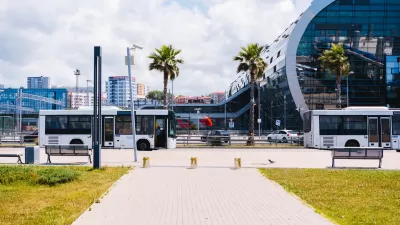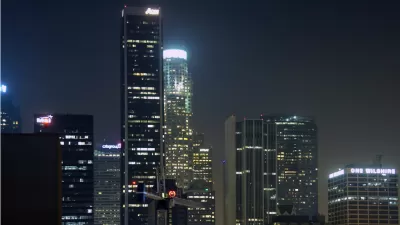A report from the American Medical Association says LED lights are bad for our health, inspiring some cities to re-evaluate the technology.

Cities all over the country are adding LED lights to streets and roadways all over the country, seeking energy efficiency and reduced maintenance requirements. A new report, however, raises alarms about the health impacts of the lights. Michael Ollove reports:
The American Medical Association issued a warning in June that high-intensity LED streetlights — such as those in Seattle, Los Angeles, New York, Houston and elsewhere — emit unseen blue light that can disturb sleep rhythms and possibly increase the risk of serious health conditions, including cancer and cardiovascular disease.
According to Ollove, nearly 13 percent of roadway lighting now use LED lights, with many more plans planning to switch to the technology in the near future, so the AMA's report applies to a huge swath of the country.
And that's not the only concern. "The AMA also cautioned that those light-emitting-diode lights can impair nighttime driving vision," adds Ollove.
The good news is that the AMA does approve of lower-intensity version of the bulbs. New York City, for example, has switched to a lower-intensity version of LED lights in efforts to retrofit its streetlights. Ollove details the efforts of cities like Phoenix and Lake Worth, Florida to find a solution that still installs new lights, but with the AMA's concerns in mind. Other cities have been far more dismissive of the report's findings.
FULL STORY: Some cities are taking another look at LED lighting after AMA warning

Maui's Vacation Rental Debate Turns Ugly
Verbal attacks, misinformation campaigns and fistfights plague a high-stakes debate to convert thousands of vacation rentals into long-term housing.

Planetizen Federal Action Tracker
A weekly monitor of how Trump’s orders and actions are impacting planners and planning in America.

In Urban Planning, AI Prompting Could be the New Design Thinking
Creativity has long been key to great urban design. What if we see AI as our new creative partner?

Florida Seniors Face Rising Homelessness Risk
High housing costs are pushing more seniors, many of them on a fixed income, into homelessness.

Massachusetts Budget Helps Close MBTA Budget Gap
The budget signed by Gov. Maura Healey includes $470 million in MBTA funding for the next fiscal year.

Milwaukee Launches Vision Zero Plan
Seven years after the city signed its Complete Streets Policy, the city is doubling down on its efforts to eliminate traffic deaths.
Urban Design for Planners 1: Software Tools
This six-course series explores essential urban design concepts using open source software and equips planners with the tools they need to participate fully in the urban design process.
Planning for Universal Design
Learn the tools for implementing Universal Design in planning regulations.
Gallatin County Department of Planning & Community Development
Heyer Gruel & Associates PA
JM Goldson LLC
City of Camden Redevelopment Agency
City of Astoria
Transportation Research & Education Center (TREC) at Portland State University
Jefferson Parish Government
Camden Redevelopment Agency
City of Claremont





























